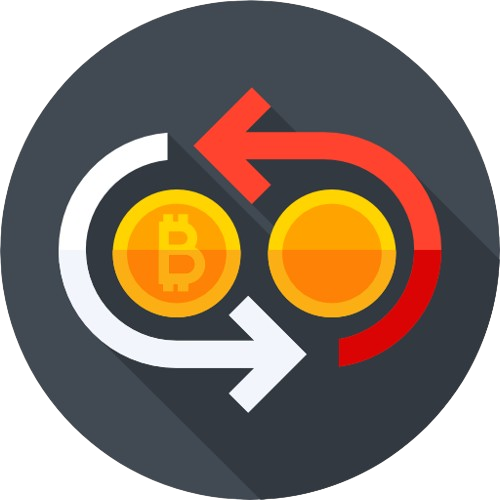
Bitcoin scalping has become an increasingly popular trading strategy, especially among day traders looking to make small but consistent profits. Scalping involves making multiple short-term trades throughout the day, aiming to profit from small price movements in the market. While scalping can be lucrative if done right, it also comes with some downsides. In this article, we will examine the pros and cons of Bitcoin scalping to help you decide if it’s a worthwhile endeavor for your cryptocurrency trading.
The Potential Advantages of Bitcoin Scalping
More Trading Opportunities
One of the main benefits of Bitcoin scalping is that it provides more opportunities to trade. Scalpers aim to profit from minor fluctuations in price, rather than waiting for larger swings. This means they can execute multiple trades per day. With Bitcoin’s volatility, there are often many small price movements that scalpers can capitalize on. More trades allow scalpers to accumulate more modest profits that add up over time.
Lower Risk Per Trade
Scalping focuses on smaller gains per trade, which also means risking less capital per trade. With each position aiming for a small 1-2% gain, the risk on each trade is lower compared to swing or position traders who aim for larger 5-10% gains. Lower risk per trade lowers overall trading risk exposure.
Can Trade in Any Market Conditions
Scalpers do not rely on long-term trends and can profit in ranging, trending, or volatile markets. As long as short-term price fluctuations occur, scalpers have trading opportunities. This flexibility allows scalping strategies to remain profitable regardless of broader market conditions.
Advantages of Automation
Scalping is well-suited to automation using trading bots. Bots can scan markets and react faster than humans, executing trades based on parameters and signals. Automated scalping allows trading around the clock without trader fatigue. Bots don’t have emotions either, making them ideal for such a short-term strategy.
The Drawbacks and Challenges of Bitcoin Scalping
Requires Constant Monitoring
Scalping demands constant monitoring of price charts and order books to spot opportunities. Sitting in front of screens all day can be exhausting. Traders need strong discipline and focus. Even short lapses in attention can lead to missed profit opportunities. Automation alleviates this issue but requires expertise in bot programming and maintenance.
High Transaction Costs

The high trade frequency of scalping leads to accumulated trading fees that eat into profits. Exchanges charge fees for each trade. If making dozens of trades per day, these fees add up.
Scalpers must account for fees in their trade plans and execution. Finding an exchange with low trading fees is a must.
Taxes on Short-Term Profits
Frequent trading means realizing gains more often. This can lead to higher tax liabilities. Short-term capital gains are normally taxed as regular income, which is higher than the long-term capital gains rate for holdings longer than a year. The tax burden can lower overall profitability.
Risk of Loss Accumulation
While scalpers aim for 1-2% profits on each trade, losses can accumulate with high-volume trading. Consecutive losing trades are not uncommon. Stop losses helps control the downside but does not prevent normal trading losses from racking up. Maintaining positive risk-reward ratios is essential.
Requires Adherence to Strict Rules
Discipline is critical to scalping success. Traders must follow specific rules on entries, exits, risk management, and trade frequency. Straying from set parameters usually reduces profitability. Lack of discipline leads some traders to overtrade or gamble, wiping out gains. Automation again provides the systematic execution needed.
The Necessity of Low Latency Connections
To profit from quick price changes, scalpers need low-latency connections and order execution. Being even seconds behind the market can mean the difference between a gain or a loss. Scalping relies on speed. Traders generally need direct exchange connections or third-party services to achieve the fastest execution. This requires technical experience and financial investment.
Is Bitcoin Scalping Worth the Time and Effort?

The above pros and cons show that Bitcoin scalping can be rewarding but requires significant effort and skill, for some the lower risk but more active trading style suits their abilities and preferences.
Trading frequently also keeps traders engaged with changing market dynamics. Yet manually scalping Bitcoin around the clock is certainly only for some.
Automation through trading algorithms largely alleviates the significant monitoring needed, as well as technical execution challenges. Bots follow parameters set by traders but react instantly based on real-time market data. Algorithms can scan and capitalize on opportunities faster than any human.
For manual Bitcoin scalping, securing a reliable and latency-optimized trading platform is a must. Exchanges offer advanced interfacing options, low fees, and high liquidity – ideal features for active scalpers.
Powerful charting and order entry software helps traders spot opportunities and efficiently manage orders and positions. Platforms have advanced features for technical analysis and order management.
The right Bitcoin wallet also supports trading success. Wallets need to provide easy access to trading accounts to capitalize on volatile price moves with fast order execution. Wallets focused on active trading are optimized for such strategies.
Finally, developing an edge is essential whether scalping manually or via algorithm. Technical indicators that reveal short-term overbought/oversold conditions provide trade signals scalpers can leverage. Honing risk and money management skills will also maximize profitability.
Overall, Bitcoin scalping can generate profits for disciplined traders but requires extensive trading skills and resources. For cryptocurrency traders interested in high-volume intraday trading strategies, dedicating the time to build scalping expertise can pay off. Yet newer traders may prefer to swing trading or investing until gaining more experience reading price charts, executing orders, and managing risks. As with any trading, know your strengths and weaknesses when deciding if Bitcoin scalping aligns with your style and goals.
Conclusion
Bitcoin scalping aims to profit from the cryptocurrency’s notorious short-term volatility. The strategy involves making multiple rapid trades per day to capture small gains that accumulate. Scalping seems attractive but comes with substantial challenges and risks. Monitoring charts constantly, minimizing fees, and optimizing order execution require extensive skills. Automated scalping via trading algorithms resolves some human limitations but has significant upfront and maintenance costs. For disciplined traders willing to dedicate the time and effort to build expertise, Bitcoin scalping offers a fast-paced and engaging trading style that can produce consistent results in range-bound or volatile markets. Yet newer traders may prefer longer timeframes until gaining experience. In the end, ensure scalping best matches your strengths, preferences, and goals.